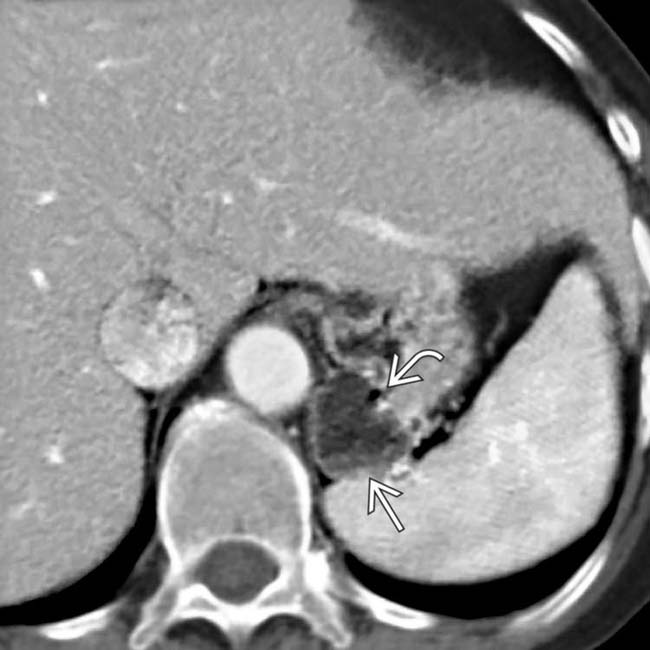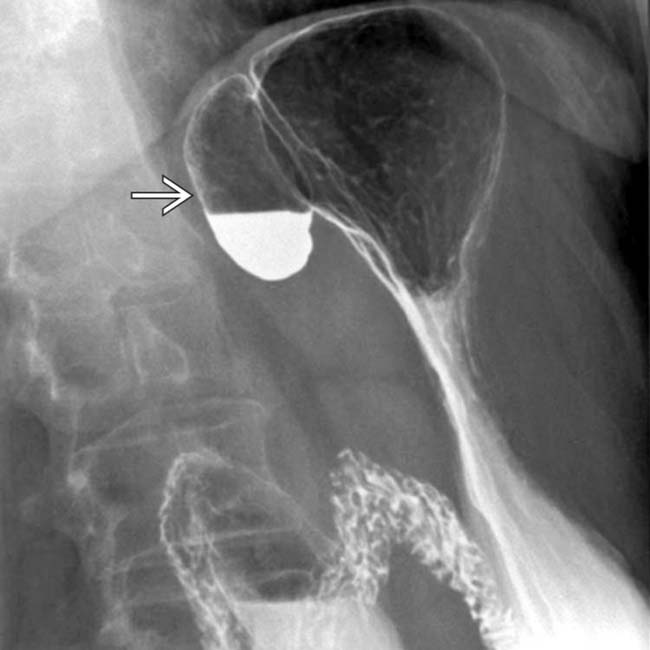Right gastric artery
Right gastroepiploic artery
Esophageal branch of left gastric artery
Left gastric artery
Splenic artery
Left gastroepiploic artery
Branches of left and right gastric arteries
(Top) In “conventional” arterial anatomy of the stomach and duodenum (present in only 50% of the population), the left gastric artery arises from the celiac trunk, supplies the lesser curvature, and anastomoses with the right gastric artery, a branch of the proper hepatic artery. The greater curvature of the stomach is supplied by anastomosing branches of the gastroepiploic arteries, with the left arising from the splenic artery.

Hepatoduodenal ligament
Pyloric sphincter
Outer (longitudinal) muscle layer
Middle (circular) muscle layer
(Bottom) The lesser omentum extends from the stomach to the porta hepatis and can be divided into the broader, thinner hepatogastric ligament and the thicker hepatoduodenal ligament. Note the layers of gastric muscle, with the middle circular layer being the thickest.

 that might be mistaken for an adrenal adenoma or other lesion. Its contiguity with the stomach and a tiny bubble of gas
that might be mistaken for an adrenal adenoma or other lesion. Its contiguity with the stomach and a tiny bubble of gas  suggest the correct etiology of gastric diverticulum.
suggest the correct etiology of gastric diverticulum.
 with an air-fluid level.
with an air-fluid level.



